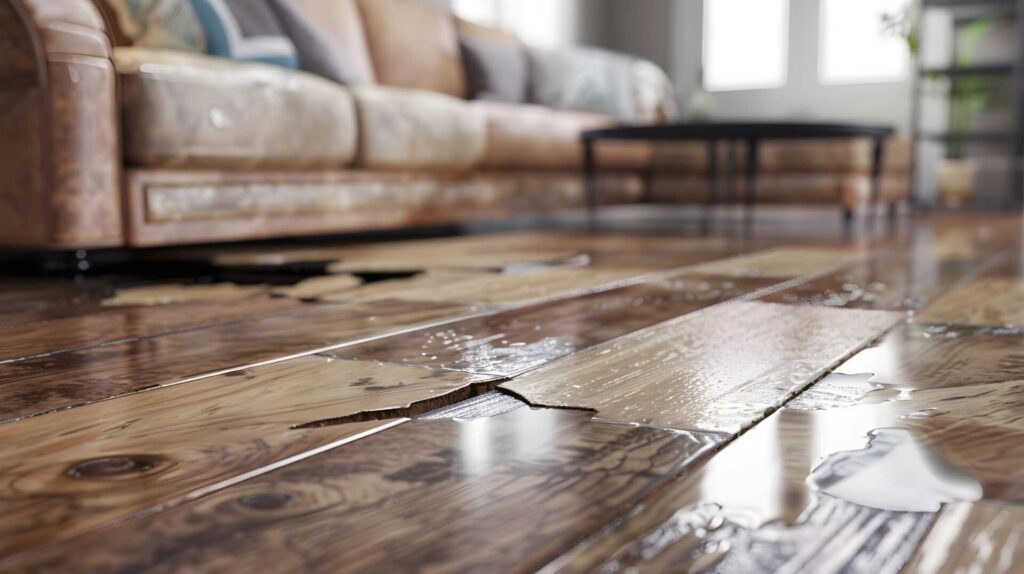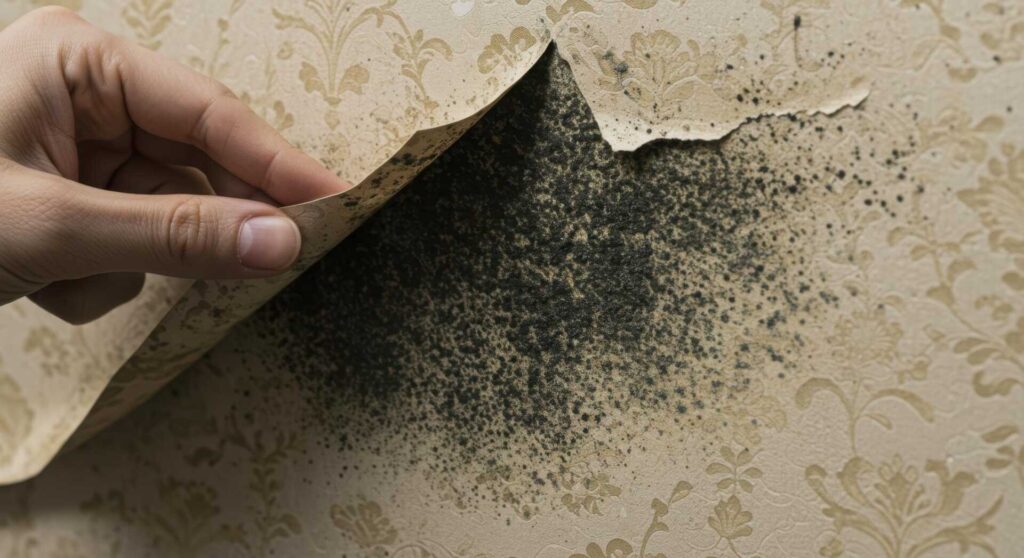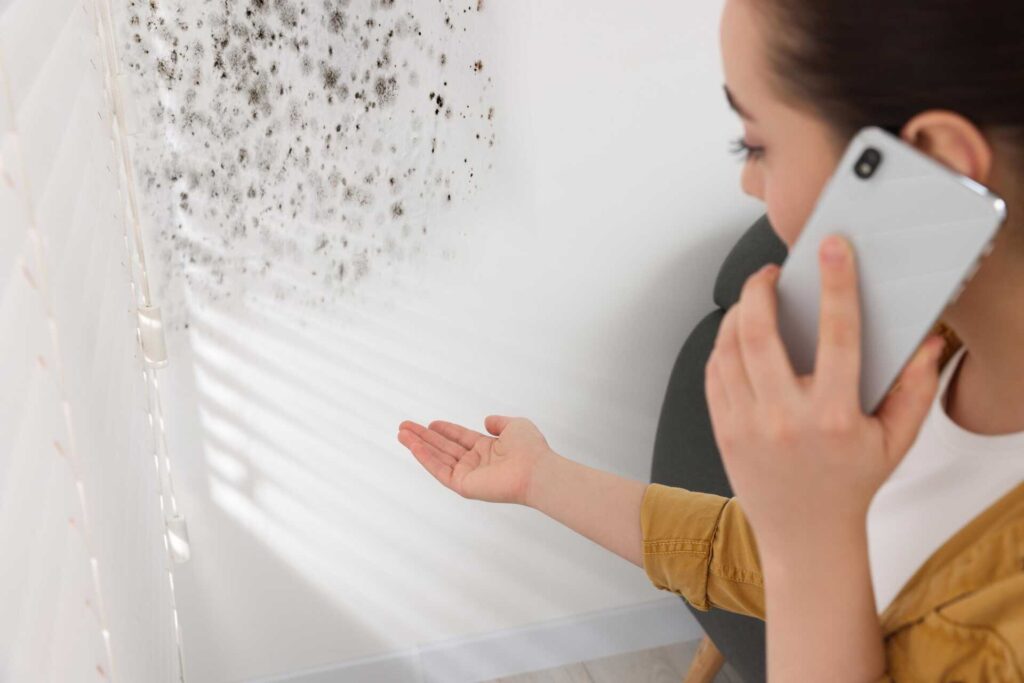
Contents
Many people underestimate the complexity of water damage repair, believing it’s just about drying things out. In reality, a systematic approach is essential for effective restoration. It starts with evaluating the damage and identifying its source before moving on to emergency water removal. Understanding these initial steps can greatly impact the overall success of the repair process. Are you prepared to explore the best techniques for each stage of restoration?
Key Takeaways
- Assess and document water damage thoroughly, noting sources, visible signs, and moisture levels for effective repair planning.
- Remove standing water promptly using submersible pumps and wet/dry vacuums to minimize further damage.
- Utilize high-velocity fans and industrial dehumidifiers to enhance drying and prevent mold growth.
- Repair and restore damaged materials using appropriate building materials that meet local safety standards.
- Consult certified professionals with experience in water damage for efficient and compliant restoration services.
Assessing the Extent of Water Damage
When you encounter water damage, evaluating its extent is essential for effective repair. Start by identifying the source of the water intrusion—whether it’s from a leak, flooding, or condensation.
Once you’ve pinpointed the source, examine the affected areas thoroughly. Check for visible signs like stained walls, warped flooring, or damp insulation.
Next, use moisture meters to measure the moisture content in materials. This helps determine how deep the damage goes.
Don’t forget to inspect hidden areas, such as behind cabinets or under carpets, since water can travel and hide in these spaces.
Document your findings with photos and notes, as this will assist in planning your repair strategy.
Emergency Water Removal Methods
When water damage strikes, your immediate response is essential for minimizing long-term effects.
You’ll need to utilize effective extraction equipment and, if necessary, engage professional restoration services to ensure thorough removal.
Understanding these emergency water removal methods will help you act swiftly and efficiently.
Immediate Response Strategies
Given that water damage can escalate rapidly, implementing immediate response strategies is essential for effective restoration. Start by turning off the electricity to prevent hazards. Next, identify the source of water and stop it if possible. Begin removing standing water using buckets or wet/dry vacuums.
| Action | Description |
|---|---|
| Turn Off Electricity | Prevents electrical hazards |
| Identify Water Source | Stops further damage |
| Remove Standing Water | Use buckets or wet/dry vacuums |
After addressing these steps, make sure to ventilate the area. Open windows and doors to facilitate drying. Finally, document the damage for insurance purposes, ensuring you’re prepared for the next steps in the restoration process.
Effective Extraction Equipment
Effective water extraction is critical in minimizing damage and preventing mold growth after a flooding incident.
Utilizing the right equipment ensures you can remove water efficiently and effectively. Here are three essential tools to take into account:
Submersible Pumps: Ideal for deep water removal, these pumps can handle significant volumes quickly, reducing standing water promptly.
Wet/Dry Vacuums: Best for smaller areas, these vacuums can extract moisture from carpets and hard surfaces, offering versatility in various situations.
Extractor Machines: Equipped with powerful suction capabilities, they efficiently remove water from carpets and padding, restoring your space more effectively.
Professional Restoration Services
Although water damage can escalate rapidly, professional restoration services provide essential emergency water removal methods that can reduce the impact. These experts utilize advanced techniques to ensure swift and effective extraction, safeguarding your property from further damage.
| Method | Description | Benefits |
|---|---|---|
| Water Extraction | High-power pumps remove standing water | Reduces moisture quickly |
| Dehumidification | Industrial dehumidifiers lower humidity | Prevents mold growth |
| Structural Drying | Air movers circulate air for thorough drying | Enhances drying efficiency |
| Sanitization | Application of antimicrobial agents | Eliminates contaminants |
Engaging professional restoration services restores your property and provides peace of mind during a stressful time. You’re not alone in this; these specialists are here to help you reclaim your space.
Drying and Dehumidification Techniques
When addressing water damage, effective drying and dehumidification are essential to prevent mold growth and structural issues.
To ensure thorough drying, you’ll need to implement air movement strategies, compare dehumidifier types, and utilize moisture detection methods.
Each of these techniques plays a key role in achieving ideal results in your restoration efforts.
Air Movement Strategies
To successfully mitigate water damage, implementing air movement strategies is essential for drying and dehumidification.
You’ll want to focus on optimizing airflow to ensure moisture evaporates efficiently. Here are three effective techniques:
Positioning Fans: Strategically place high-velocity fans to direct airflow toward wet surfaces, enhancing evaporation rates.
Cross-Ventilation: Open windows and doors to create a cross-ventilation effect, allowing fresh air to replace humid air in the space.
Utilizing Ceiling Fans: Activate ceiling fans to circulate air, further aiding in the drying process and reducing humidity levels.
Dehumidifier Types Comparison
Understanding the different types of dehumidifiers can greatly impact your water damage restoration efforts.
You’ll typically encounter two main types: refrigerant and desiccant dehumidifiers. Refrigerant dehumidifiers are perfect for warmer environments, using a cooling coil to condense moisture from the air. They’re efficient for large spaces but may struggle in colder conditions.
On the other hand, desiccant dehumidifiers work effectively in lower temperatures, utilizing moisture-absorbing materials to extract humidity. They’re quieter and more portable, making them perfect for smaller areas.
When choosing a dehumidifier, consider factors like space size, temperature, and humidity levels. Selecting the right type ensures ideal drying, minimizing damage and restoring your space efficiently.
Moisture Detection Methods
How can you effectively detect moisture in your space during water damage restoration?
Accurate moisture detection is essential for successful drying and dehumidification. Here are three reliable methods you can use:
Moisture Meters: Utilize digital or analog moisture meters to measure the moisture content in various materials, ensuring accurate readings.
Infrared Cameras: Employ infrared technology to visualize temperature differences, helping you identify hidden moisture pockets behind walls or under floors.
Hygrometers: Measure the humidity levels in the air, guiding your drying process and ensuring the environment remains conducive for effective moisture removal.
Mold Prevention and Remediation Strategies
Since mold thrives in damp environments, implementing effective prevention and remediation strategies is essential for maintaining a healthy space. Begin by controlling humidity levels; aim for 30-60% relative humidity using dehumidifiers or air conditioning. Regularly inspect areas prone to moisture, such as bathrooms and basements, and promptly address any leaks.
Here’s a quick reference table for your mold management strategy:
| Prevention Strategies | Remediation Techniques |
|---|---|
| Seal windows and doors | Use HEPA filters during cleanup |
| Insulate pipes | Remove contaminated materials |
| Install exhaust fans | Apply antimicrobial treatments |
| Clean gutters regularly | Scrub surfaces with detergent |
| Ventilate crawl spaces | Consult a professional if needed |
Structural Repair and Restoration Processes
When water damage occurs, addressing structural repair and restoration processes promptly is essential to prevent further deterioration.
You’ll want to follow a systematic approach to ensure your property regains its integrity. Consider these critical steps:
- Assessment: Inspect the affected areas thoroughly. Identify damaged materials, structural weaknesses, and potential hazards.
This will help you determine the extent of the repairs needed.
- Drying: Eliminate moisture using industrial dehumidifiers and fans.
Verify everything, including walls, floors, and insulation, is completely dry to prevent mold growth and further damage.
- Repair and Restoration: Replace or reinforce damaged materials, such as beams, drywall, or flooring.
Use appropriate building materials to restore the structure to its original condition, ensuring durability and safety.
Choosing the Right Water Damage Repair Professionals
Choosing the right water damage repair professionals can greatly impact the outcome of your restoration efforts. Start by evaluating their qualifications; confirm they’re certified by recognized organizations, such as the Institute of Inspection, Cleaning and Restoration Certification (IICRC).
Experience matters, so look for companies with a proven track record in handling similar situations.
Next, evaluate their response times. Water damage can worsen quickly, so professionals should be available 24/7. Ask for references and read online reviews to gauge customer satisfaction. A reliable company will provide transparent estimates detailing costs and procedures.
Additionally, verify their insurance coverage to protect yourself from liability.
When you consult with potential professionals, pay attention to their communication style; you want a team that listens to your concerns and explains processes clearly.
Choosing wisely will confirm thorough repairs and give you peace of mind during a challenging time.
Preventative Measures to Avoid Future Water Damage
To effectively prevent future water damage, it’s vital to assess and address vulnerabilities in your home’s infrastructure.
By taking a systematic approach, you can greatly reduce the risk of water-related issues. Here are three essential preventative measures you should implement:
Inspect and Maintain Gutters: Regularly clean and repair gutters to ensure proper drainage. Clogged gutters can lead to overflow, causing water to seep into your home’s foundation.
Seal Leaks and Cracks: Examine your home’s exterior for cracks or gaps in the foundation, windows, and doors. Use high-quality sealants to prevent water infiltration.
Install a Sump Pump: Consider installing a sump pump in your basement or crawl space. This device can effectively remove excess water, particularly during heavy rainfall or flooding.
Wrap-Up
Effectively addressing water damage isn’t just about immediate fixes; it’s a systematic process. Some believe that drying out surfaces is enough, but without proper dehumidification and mold prevention, you’re inviting future issues. By following the best practices outlined—assessing damage, removing water, drying thoroughly, and restoring materials—you can ensure a durable solution. Remember, choosing skilled professionals can make all the difference in safeguarding your property against future water-related problems.

